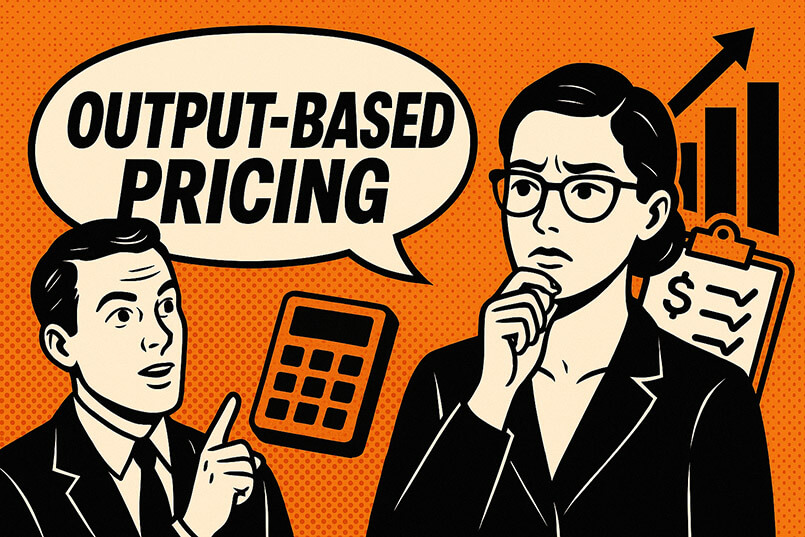Marketing teams can be broadly divided into two groups. There are some who think their agency is paid too much. And others think they have already negotiated a cracking deal with their agency and nothing else needs to be done.
Neither group is usually right.
This goes some way to explaining why, when client-agency relationships begin to deteriorate and the marketing team gets restless, we usually begin by taking a long, hard look at the money. Because it’s usually a very helpful place to start.
Here are three steps you can take yourself to ‘follow the money’ and check on how it’s driving or hindering your own agency relationships.
Money talks – so work out what yours is saying.
The way that you pay your agency sends a message. That’s true whether or not you intended a message to be sent, and it’s true whether or not the agency acts upon the message being sent.
Most marketers don’t realise this or fail to spot the link between the method of agency remuneration and the agency behaviours that result
With an agency retainer, for instance, marketers will often complain that the agency is ‘packing meetings’ with many account people and strategists, and they ‘have no idea what all these people do’. Yet in most of these cases, because of the way retainers are commonly set up, it is in the agency’s interests to bring people on to the business to train them up and to spread the revenue across a wider agency team to ‘demonstrate commitment’ to the client’s account.
Or with a move to project fees, marketers will typically bemoan the loss of agency proactivity and early-state strategic involvement without realising that the remuneration model chosen actively discourages those behaviours from the agency and instead rewards limited involvement and rapid turnaround.
We could go on because every remuneration model sends some message. If you don’t know what message you are sending your agencies along with their fees, then your first step as a marketer is to find out.
Start paying your agency to do what you want it to do.
Plenty has likely moved on since you last looked at your agency remuneration. Your market will be different, your target audiences will behave in new ways, channels will have transformed, the agency’s skillsets and team will have evolved, and your requirements will have moved in line with your strategy. Yet amidst all this change, it is common that agency remuneration agreements remain frozen, relics from the time (maybe 2-3 years ago) when the contracts were signed. And once a marketer’s objectives come adrift from agency remuneration – even assuming the two were ever properly aligned – then trouble invariably follows.
We see many solid client-agency relationships founder upon this failure, from both parties, to realise that remuneration is a moving target, not a ‘set and forget’.
In a recent engagement, for instance, we uncovered an agency team being paid under the terms of its original contract to sweat over a set of monthly competitive reports that none of the current marketing team was reading or was even aware existed. Yet elsewhere in the scope of work, the agency was under significant resource pressure to manage and optimise outputs across a far broader channel mix. The conversation to reconcile the two had never taken place, so the agency was, on the one hand, being paid to do something the marketer no longer needed while, on the other, being unable to deliver against new requirements without more money.
At other times, the assumptions of an original contract must be challenged before they destroy the true commercial value in a relationship. We commonly encounter this where a creative agency has been appointed to deliver an annual scope of work, only for the production element of the scope to expand exponentially over a short period and catch everyone unaware. Too often, the solution is assumed to be in a series of negotiations over price for the expanded production remit. This inevitably starts to poison the agency-client relationship, usually because the agency has based too much of its remuneration and profit on the production back-end. The real solution is usually to re-visit the contract and ensure that the incumbent agency is being paid properly to focus on what the marketer really wants it to do – develop great creative work. The production element of the scope can then be managed separately – either in-house, as an outsourced operation or as a blend – under a business model properly suited to the task, via the incumbent or otherwise.
Focusing on the actual outputs and contributions you want from an agency and then ensuring that there is complete clarity and alignment around remuneration for those things is the foundation for those long-lasting, sustainable and successful client-agency partnerships that we all know work so well.
Pay fewer agencies more money to do things better.
In our experience at TrinityP3, every agency added to a marketer’s roster typically results in a 12 to 15% loss of efficiency. This loss comes from the additional costs of onboarding and contracting the agency, briefing and debriefing, and funding an extra team of account people and strategists. The figure does not take into account the considerable extra marketing team head hours involved in managing yet another agency and having to fit yet another set of insights and creative proposals within the whole. And even more importantly, it does not consider the opportunity cost of focusing marketing spend with one or two agencies instead of fragmenting it across three or four.
Procurement teams are usually delighted to hear marketers talk about the advantages of consolidation and the power of fewer buying points. Marketers are typically less enthusiastic about these subjects, fearing a loss of choice and a reduction in competitive tension when it comes to creative or strategic delivery.
Yet consolidating more marketing spend into fewer agencies – when done properly – can yield considerable benefits for most marketing teams.
In our experience and depending on the agency roster model chosen, the marketing team ends up with more experienced and specialised agency resources, giving the business greater focus and priority and providing deep capability that was previously beyond the reach of the marketing budget.
The marketing team will also be released from the onerous task of managing competing agency teams, insights and ideas. The main agency will find it is more profitable and able to contribute to the big strategic decisions the marketing team is making. The other valued roster members will also find their work with the marketer more profitable.
And, of course, the procurement team will be more than happy.
So, here are three steps to help diagnose and improve how you spend money with your agencies. We’re not saying that looking at the money tells you everything. As Neil Diamond teaches us: ‘Money talks, but it don’t sing and dance and it don’t walk’. But in our experience, following the money is usually a good place to start.
If you want to take any of these steps to follow the money, here are some resources to help:
The Agency Decision Tree – an interactive agency fee model selection resource
The Comprehensive Guide to Advertising Agency Fees – A downloadable guide for marketers
Further reading and insights on Agency Fee Models from TrinityP3
Or discover how our Agency Commercial Evaluation Services can help.




